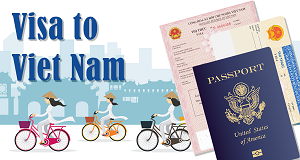Child rights take root in VN
Viet Nam News - July 9, 2003
HA NOI — A child urges her father to let her go to school. She then says she would be able to if he would stop drinking alcohol.
While such outspoken behaviour from children is traditionally considered rude in Viet Nam’s Confucian-influenced society, it is becoming more common as child rights groups continue to spring up around the country.
The Christian Children’s Fund of Australia, CCF, has established some of the latest such clubs in Hoa Binh Province’s Tan Phong Commune, encouraging children to speak up about their needs and desires.
By drawing pictures, writing and talking in small groups about their rights, children in the commune say they feel more comfortable and confident to speak out.
"I wish a new kindergarten would be built in my village," wrote 14-year-old Cao Thi Mai Chi in one essay. "The existing kindergarten is run-down after the rains, and doesn’t have enough toys for kids to play with."
Chi is one of more than 500 children in the commune taking part in the children’s clubs.
In addition to more conventional kids’ clubs activities like reading books and playing games, they are trained to handle all affairs of their clubs, and to be aware of their rights to demand that adults meet their essential needs recognised by laws.
Making progress
While the clubs in Tan Phong Commune are only in the first stage of a five-year project, similar groups around Viet Nam are now in their sixth year, and surveys suggest they are making progress.
The National Council of Young Pioneer Brigades, in collaboration with United Nations Children’s Fund (UNICEF), established 32 child-rights clubs since 1997 in primary and junior secondary schools and in children’s palaces in big cities and provinces.
Initially, training courses on the International Convention on the Rights of the Child and the Law on Protection, Care and Education of Children were provided to the leaders of young pioneer brigades in schools and palaces.
These leaders then pass this knowledge to the clubs’ child members, who are required to develop their own action plans to raise awareness of the rights and responsibilities of children.
The club incorporates child-rights education into performances, sports, camping and drawing.
"I like to participate in the child rights club because it helps me to understand more about my rights," said 13-year-old Nguyen Phuong Thuy. "I am treated equally and I can freely express my ideas."
A survey of the clubs’ members shows the children have learned the basic categories of child rights, including the right to live and develop, to be protected, to participate, to entertain and to receive health care.
The survey, polling 400 children in seven clubs, found that 67.3 per cent knew about the right to live, 59.3 per cent about the right to develop and participate, and 58.8 per cent about the right to be protected.
The findings also found that 75 per cent of children tell their parents and relatives about child rights, 64.3 per cent tell people in the neighbourhood, and 24.5 per cent have made speeches at neighbourhood meetings.
Even the parents appear supportive of child’s right clubs.
"They are ready to support us in spirit as well as resources to set up children’s clubs," said Bui Phuong Lan, CCF’s Manager of Child and Sponsor Programmes.
The survey said 86.5 per cent of children received full support from parents. Self-employed parents and factory workers tended to be most supportive.
"After participating in the child rights clubs, children behave better, become more hard-working and more aware of their rights and responsibilities," said Tran Thi Nga, a worker in Hung Yen Province. "That’s why I help my son get to meetings on time and encourage him to participate."
Organisers now plan to expand the programme, which is far from reaching all of Viet Nam’s child population of more than 25 million. Clubs for the remote and mountainous communes of Dac Lac and Lao Cai provinces are currently in the works.
Viet Nam was the first country in Asia and the second in the world to ratify the International Convention on the Rights of the Child. In 1991 the Law on the Protection, Care and Education of Children was passed. — VNS



